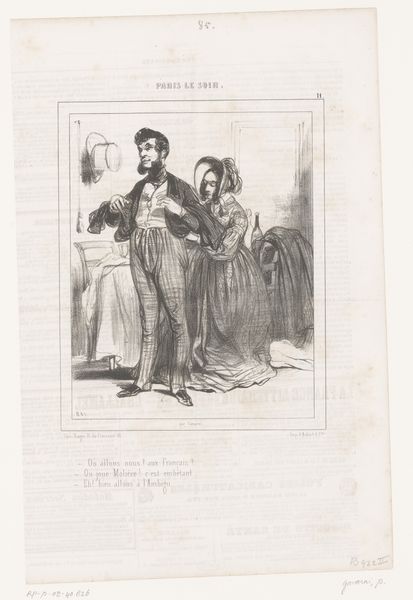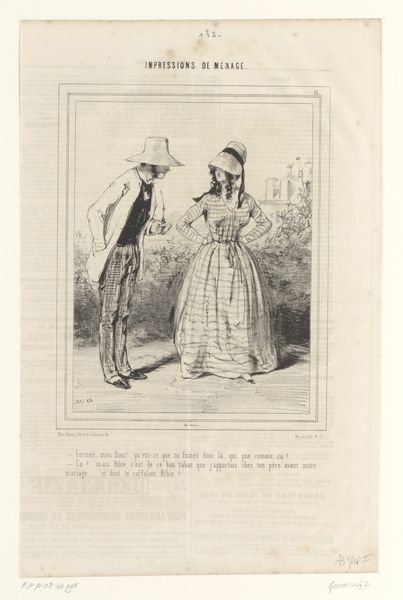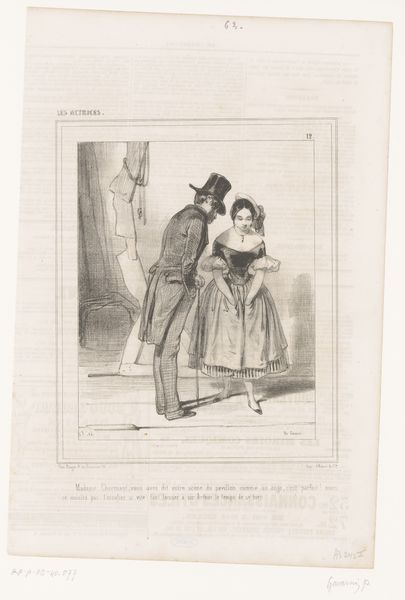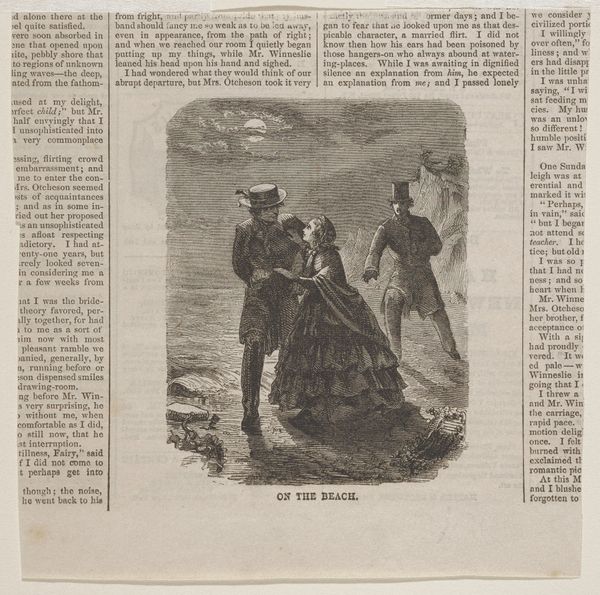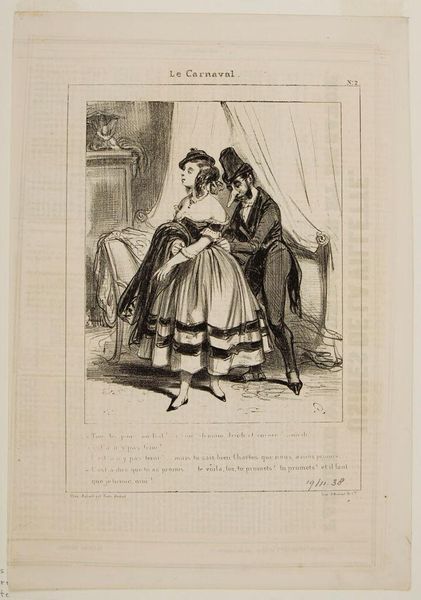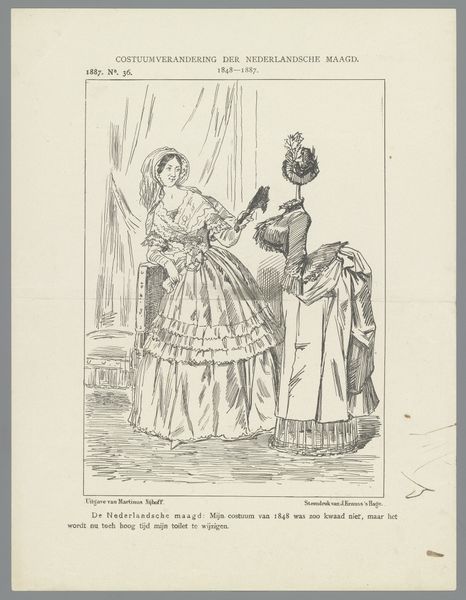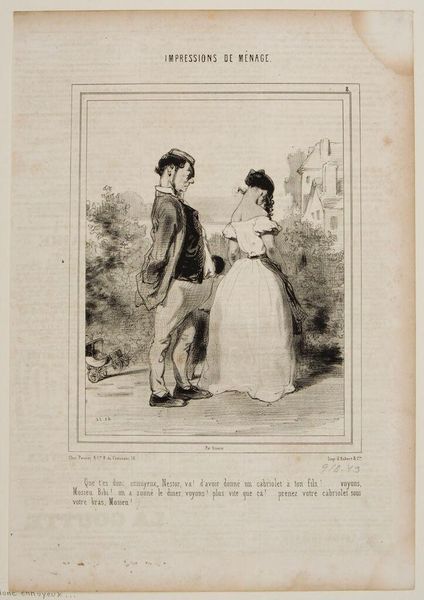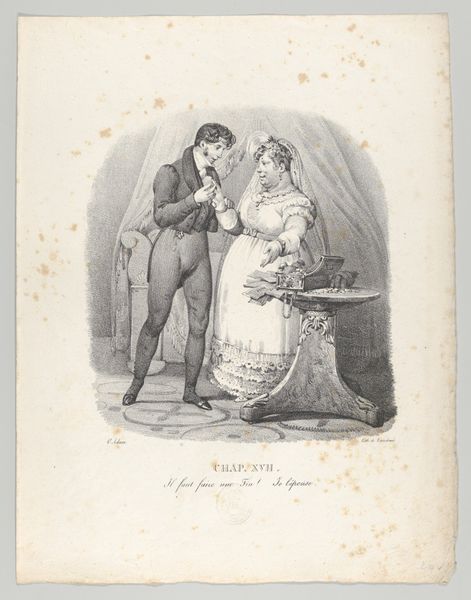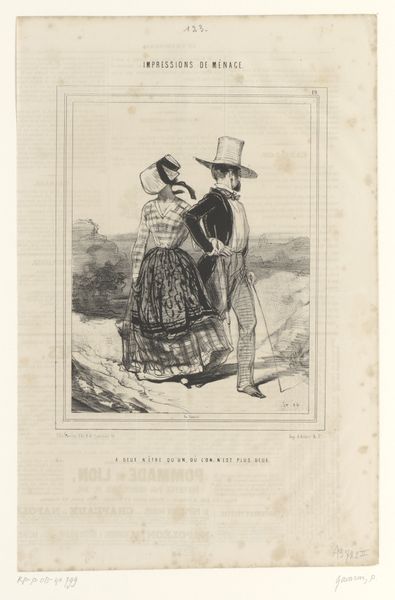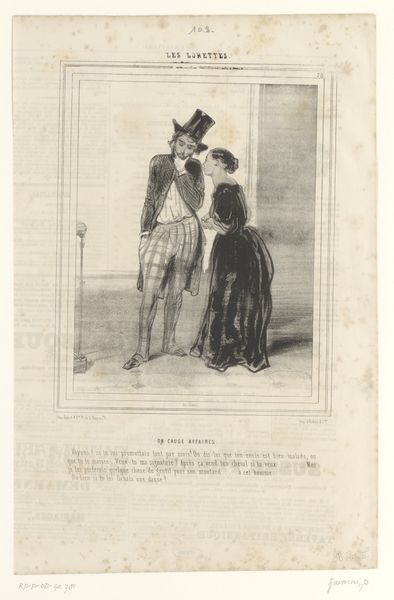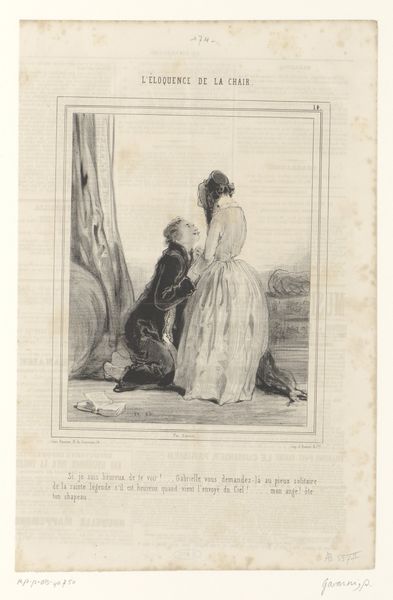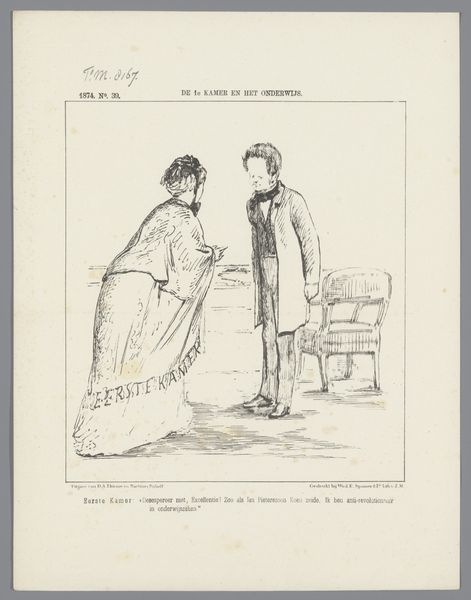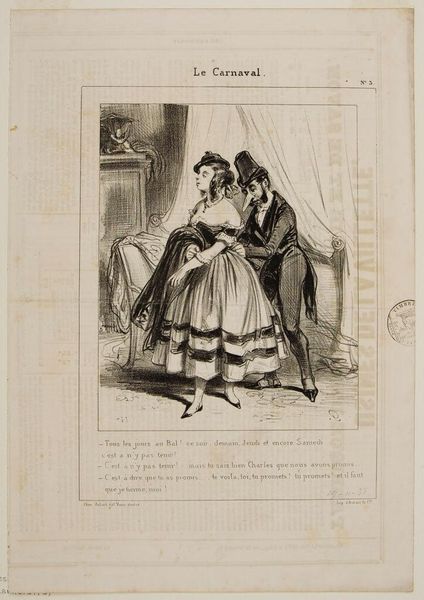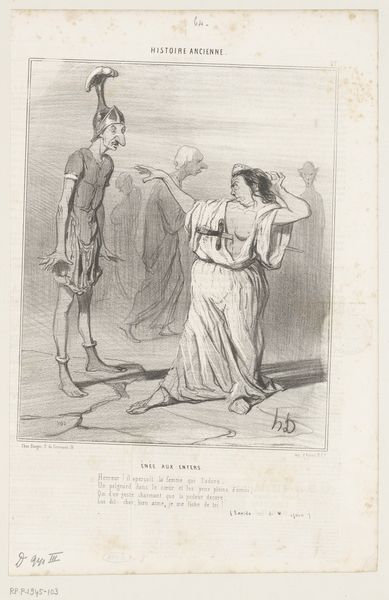
print, woodcut, wood-engraving, engraving
#
narrative-art
# print
#
figuration
#
woodcut
#
line
#
genre-painting
#
wood-engraving
#
engraving
Dimensions: 4 7/16 x 3 1/2 in. (11.3 x 8.9 cm)
Copyright: Public Domain
Curator: Here we see "The Buds," a wood engraving completed by Winslow Homer in 1860. The print is held here at the Minneapolis Institute of Art. It shows two young women and a man in what appears to be an outdoor garden setting. What strikes you first? Editor: Immediately, I'm drawn to the rigidity in this grouping. The characters seem frozen in a carefully arranged tableau. The contrast between the almost cartoonish exaggeration of the women's dresses and the solemn stillness of their faces is… curious. Curator: It speaks volumes about the social scripts they're performing, doesn’t it? Homer created this around the beginning of the Civil War. So, how are ideas around class, gender, and courtship being codified, even romanticized, against the backdrop of national turmoil? The visual emphasis on dress, on outward performance of ideal femininity, can't be ignored. Editor: Precisely. The dresses themselves—conical shapes covered in exuberant detail—seem almost like symbols of constructed identity. I’m wondering if they represent a cocoon or constraint around nascent womanhood? Perhaps these "buds" are yet to truly bloom, weighed down by societal expectations? Curator: Absolutely. And it raises questions about the male figure—his presence as an arbiter of their potential. Homer frequently used garden settings to examine the relationships between women and nature, women and societal expectations, as well as how male figures often try to impose control within those domains. I always understood it as commentary on social imbalances. Editor: Visually, the lines have such sharpness that the women’s fashionable clothing feels not opulent or romantic, but restrictive – as if the very wood that defines their forms imprisons them in these roles. The way the artist used those marks creates a story with an almost urgent need for them to break free. Curator: Exactly. And in understanding Homer’s broader body of work, including his later depictions of women, “The Buds” really resonates with a specific time, reflecting the way young women, at this particular cultural-historical moment, performed femininity. It is hard not to see their agency— or lack thereof— in sharp focus. Editor: Well, this journey into 1860s gender politics viewed through the lens of symbolism and artful staging makes me eager to investigate Winslow Homer’s evolution as an artist. Curator: Absolutely. "The Buds," while seemingly a simple image, has so much to tell us about gender, society, and artistic practice during this formative period.
Comments
No comments
Be the first to comment and join the conversation on the ultimate creative platform.
